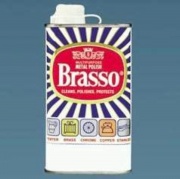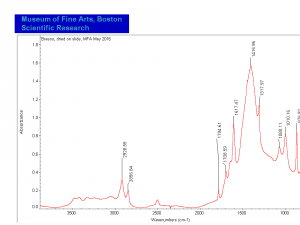Difference between revisions of "Brasso polish"
Jump to navigation
Jump to search
| Line 24: | Line 24: | ||
* J. Moss "Ammoniated Cleaning Solutions" ''British Horological Institute Journal'', August 1997, online [http://www.antiqueclockconservation.com/scc.htm Link] | * J. Moss "Ammoniated Cleaning Solutions" ''British Horological Institute Journal'', August 1997, online [http://www.antiqueclockconservation.com/scc.htm Link] | ||
| − | * Reckitt | + | * Reckitt: [https://www.reckitt.com/ Website] (As of 2022, Brasso is no longer listed as a product in the US) |
* Cconservation termlist: www.hants.org.uk/museums | * Cconservation termlist: www.hants.org.uk/museums | ||
Latest revision as of 09:23, 10 May 2022
Description
[Reckitt Benckiser, NJ, US] A registered trademark for a commercial metal polish. Brasso is advertised for cleaning and polishing Brass, Copper, plate chrome, Stainless steel, and Pewter. The slightly viscous, opaque liquid contains Petroleum distillate (60-70%), crystalline Silica (9-12%) and ammonia (2-3%). Ammoniated cleaners are not recommended for museum objects.
Risks
- Reacts with silver.
- May dissolve paint and varnish.
- Causes stress corrosion cracking of brass coated iron and hardened brass.
- Rothko: SDS
Physical and Chemical Properties
| Density | 0.97 g/ml |
|---|---|
| Boiling Point | 159.9 |
Resources and Citations
- J. Moss "Ammoniated Cleaning Solutions" British Horological Institute Journal, August 1997, online Link
- Reckitt: Website (As of 2022, Brasso is no longer listed as a product in the US)
- Cconservation termlist: www.hants.org.uk/museums

